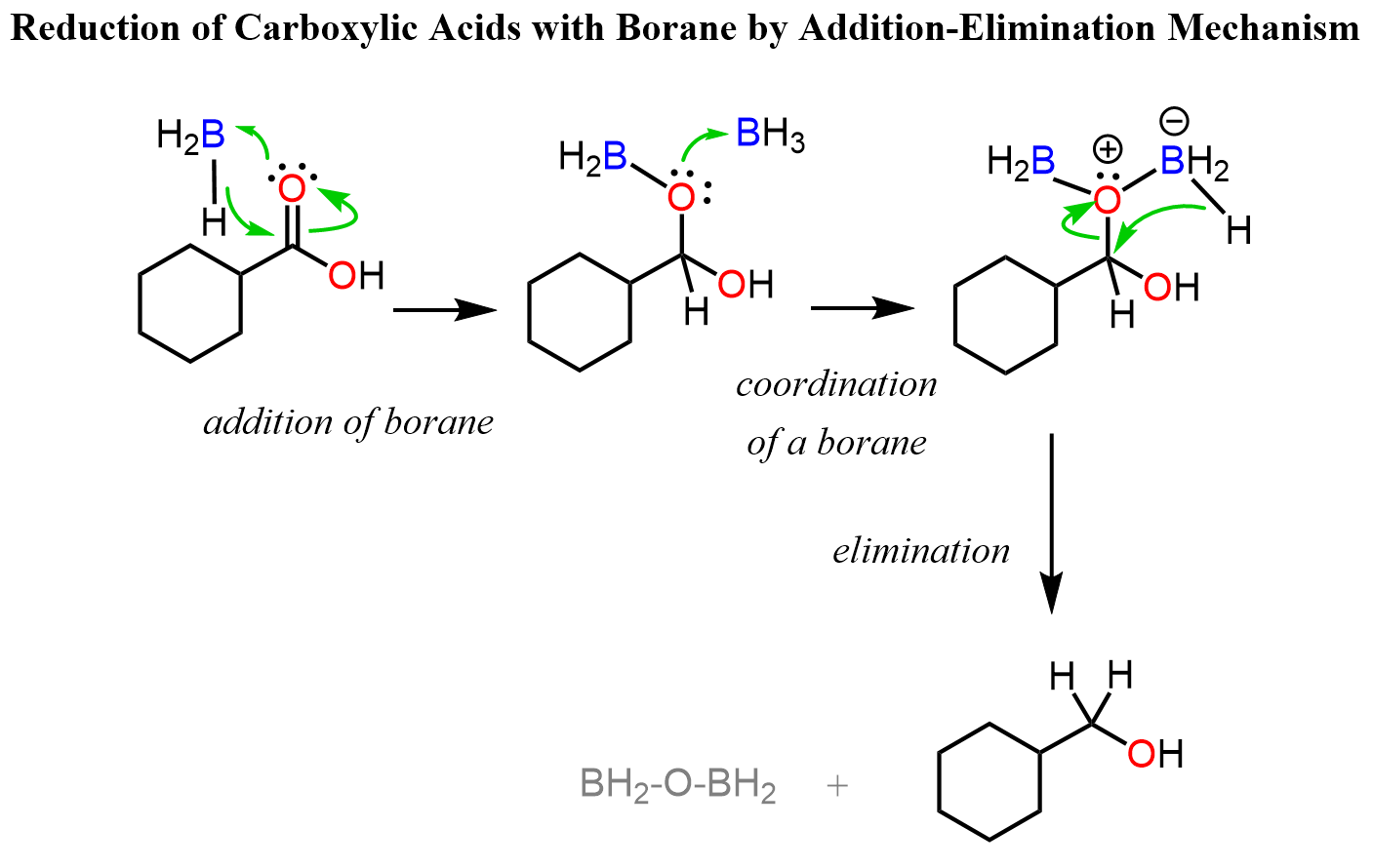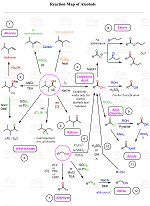Carboxylic acids can be converted to alcohols using an excess of strong reducing agents such as LiAlH4.

The excess reducing agent is needed because first we are going to have a deprotonation of the carboxylic acid, and then a reduction of the carboxylate ion.

After this, it is still two consecutive additions of hydrogen to the carbonyl group. The first addition converts the acid to an aldehyde, and the aldehyde being more reactive than the acid, is further reduced to the corresponding alcohol:

The carboxylate ion is not as electrophilic because of a greater electron density; however, the hydride addition is facilitated by the coordination of the Al to the carbonyl oxygen. This withdraws some of the electron density thus making the carbon more electron-deficient. After the hydride addition, we have an elimination step where the –OAlH2 is expelled resorting the carbonyl in the form of an aldehyde:

Once the aldehyde is formed, is quickly reduced to the corresponding alcohol by another hydride addition. Remember, that aldehydes are more reactive than carboxylic acids because we do not have the resonance donation of the oxygen to the carbon. This reduces the electron-deficient character of the carbon which makes acids and esters less reactive than aldehydes and ketones.
Reduction of Carboxylic Acids with Borane
We saw in the mechanism above that the carbonyl is activated by the coordination of the oxygen to Al which serves as a Lewis acid there. Now, borane is another Lewis acid, and when coordinated to oxygen, it becomes electron-rich and thus a hydride donor. This turns out to be a good tool for reducing carboxylic acids to alcohol. It is still an addition-elimination reaction to the carbonyl, however, the intermediate is not an aldehyde but rather a boronic ester:

You can read more about it in different articles, including: https://doi.org/10.1016/j.jphotobiol.2015.04.015.
Organic Chemistry Reaction Maps
Never struggle again to figure out how to convert an alkyl halide to an alcohol, an alkene to an alkyne, a nitrile to a ketone, a ketone to an aldehyde, and more! The comprehensive powerfull Reaction Maps of organic functional group transformations are here!
Check Also
- Fischer Esterification
- Ester Hydrolysis by Acid and Base-Catalyzed Hydrolysis
- What is Transesterification?
- Esters Reaction with Amines – The Aminolysis Mechanism
- Ester Reactions Summary and Practice Problems
- Preparation of Acyl (Acid) Chlorides (ROCl)
- Reactions of Acid Chlorides (ROCl) with Nucleophiles
- Reaction of Acyl Chlorides with Grignard and Gilman (Organocuprate) Reagents
- Reduction of Acyl Chlorides by LiAlH4, NaBH4, and LiAl(OtBu)3H
- Preparation and Reaction Mechanism of Carboxylic Anhydrides
- Amides – Structure and Reactivity
- Naming Amides
- Amides Hydrolysis: Acid and Base-Catalyzed Mechanism
- Amide Dehydration Mechanism by SOCl2, POCl3, and P2O5
- Amide Reduction Mechanism by LiAlH4
- Amides Preparation and Reactions Summary
- Amides from Carboxylic Acids-DCC and EDC Coupling
- The Mechanism of Nitrile Hydrolysis To Carboxylic Acid
- Nitrile Reduction Mechanism with LiAlH4 and DIBAL to Amine or Aldehyde
- The Mechanism of Grignard and Organolithium Reactions with Nitriles
- Carboxylic Acids to Ketones
- Esters to Ketones
- Carboxylic Acids and Their Derivatives Practice Problems
- Carboxylic Acids and Their Derivatives Quiz

